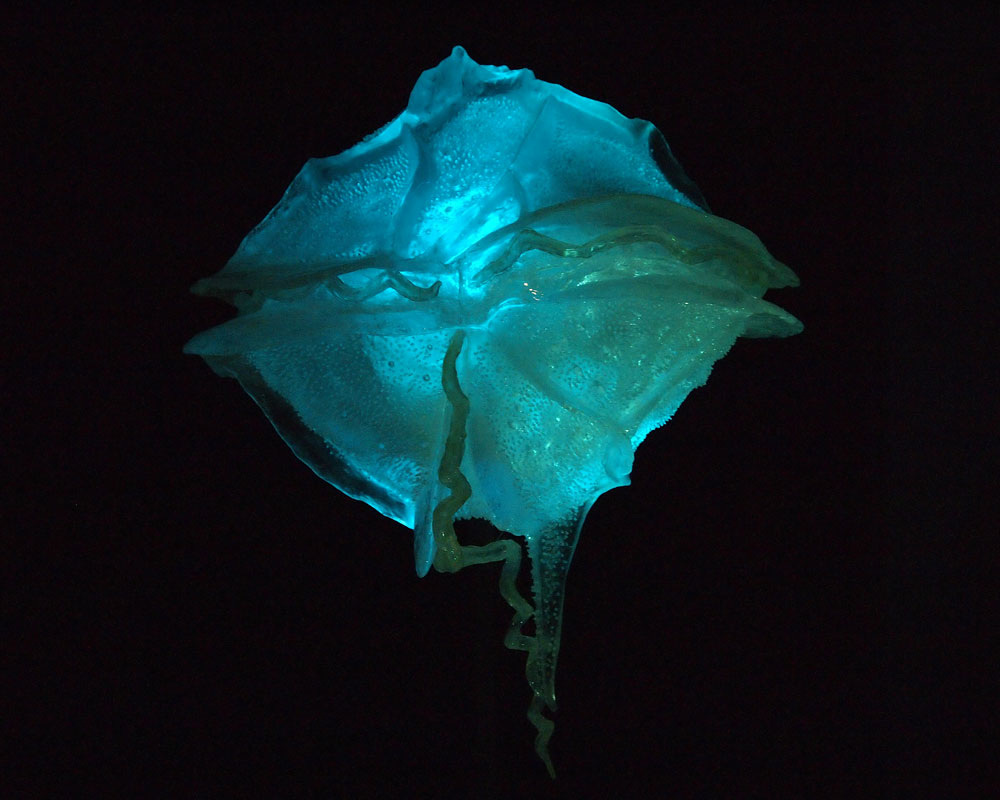The vampire squid
|
Vampire squid, or Vampyroteuthis infernalis, is an ancient species that has remained basically unchanged since the age of dinosaurs, over 3 million years ago, and is a phylogenic relict, which is the only surviving member of the order Vampyromorphida. It was originally discovered in 1903, named the vampire squid from hell although it actually isn’t neither a vampire nor a squid. Its inhabit region is between 1800 feet to 3500 feet below the sea surface.
As a deep sea species, Vampyroteuthis, like many other organisms in the deep sea, has bioluminiscence. It has two large light organs located at the base of the fins, called photophores. It has the ability to modulate the size and intensity of the photophores to create complex patterns that can be used to disorient predators and attract prey. The photophores are larger and more complex at the tips of the arms. This organism also has a remarkable third source of bioluminescence, in that they can produce a cloud of luminescent particles embedded in mucus from their arm tips, serving to distract potential predators. These 'glowing clouds' can persist for up to ten minutes; they are a unique feature of Vampyroteuthis. Unlike most deep-water octopus, Vampyroteuthis lacks an ink sac. Such an ink sac would be useless for it in the darkness, since most time it utilizes the bioluminicnece to defense in deep sea. By Xidan XU |
|

